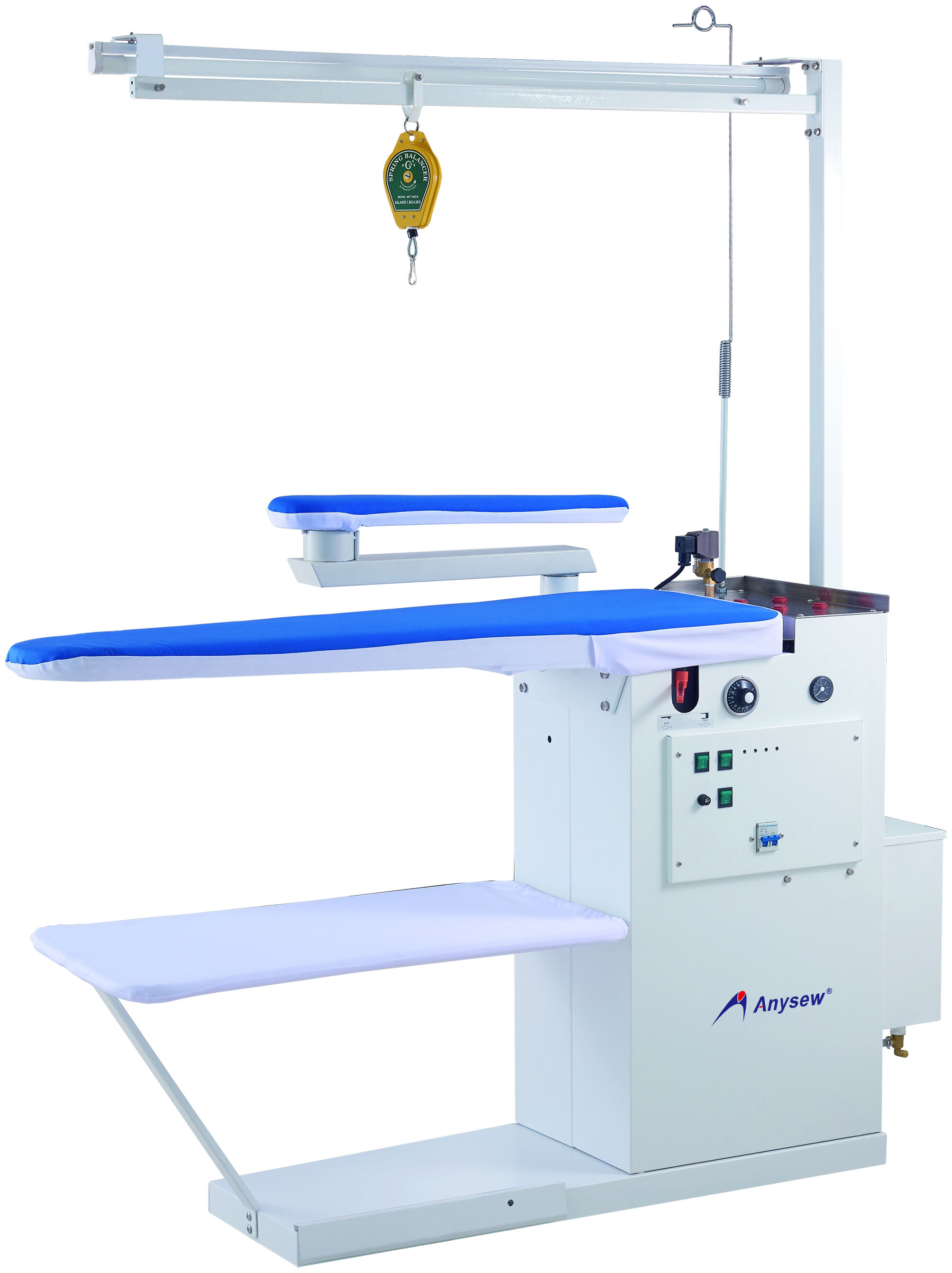إحداث ثورة في كفاءة التصنيع بتقنية قطع متقدمة
في بيئة التصنيع السريعة اليوم، أصبح دمج آلات القطع حجر الزاوية في التميّز التشغيلي. تقوم هذه الأنظمة المتطورة بتحويل المواد الخام إلى مكونات مصنوعة بدقة وبسرعة ودقة لم يسبق لهما مثيل. تمثل آلات القطع الحديثة قفزة كمية إلى الأمام في القدرة التصنيعية، حيث تمنح الشركات المصنعة القدرة على تسريع عمليات الإنتاج بشكل كبير مع الحفاظ على معايير جودة استثنائية.
تمتد آثار آلات القطع إلى ما هو أبعد من الأتمتة فحسب - فهي تعيد تشكيل سير عمل الإنتاج جذريًا، مما يمكن الشركات من تلبية متطلبات السوق المتزايدة والحفاظ على ميزات تنافسية في بيئات صناعية تتسم بتحديات متزايدة. ومع تعمقنا أكثر في الآثار التحويلية لهذه الأنظمة، سنستعرض كيف تحدث ثورة في التصنيع عبر قطاعات مختلفة.
الفوائد الأساسية للأنظمة المتقدمة للقطع
دقة وثبات محسّنتين
توفر آلات القطع الحديثة دقة لا مثيل لها في كل عملية. وعلى عكس عمليات القطع اليدوية التي قد تختلف حسب مهارة المشغل وتعبه، فإن آلات القطع الآلية تحافظ على دقة ثابتة طوال فترات الإنتاج الطويلة. وتنعكس هذه الدقة مباشرةً في تقليل هدر المواد، وتقليل عدد الأجزاء المرفوضة، وتحسين جودة المنتج بشكل عام.
تعني قدرة آلة القطع على نسخ المواصفات الدقيقة أن المصانع يمكنها إنتاج آلاف المكونات المتماثلة مع الحد الأدنى من التباين. هذه المستوى من الاتساق مهم بشكل خاص في الصناعات مثل الفضاء الجوي، وتصنيع السيارات، وإنتاج الأجهزة الطبية، حيث يمكن أن تؤدي أي انحرافات طفيفة إلى عواقب كبيرة.
الحد الأقصى للإنتاج التشغيلي
أحد أبرز المزايا لتطبيق آلة قطع هو قدرتها على العمل باستمرار مع حد أدنى من التوقف. يمكن لهذه الأنظمة الحفاظ على مستويات الأداء القصوى لفترات طويلة، تفوق بكثير إمكانيات عمليات القطع اليدوية. ويتم تحقيق الزيادة في الإنتاج من خلال عدة عوامل، منها تغيير الأدوات بسرعة، وتحسين مسارات القطع، والقدرة على معالجة قطع متعددة في الوقت نفسه.
غالبًا ما تُبلغ منشآت التصنيع التي تستخدم آلات القطع عن زيادة في سرعة الإنتاج تتراوح بين 200٪ و300٪ مقارنة بالطرق التقليدية. تتيح هذه التحسينات الكبيرة في الطاقة الإنتاجية للشركات تولي طلبات أكبر، والوفاء بمواعيد تسليم أضيق، وتقليل التكلفة لكل وحدة بشكل كبير.
دمج التكنولوجيا وتحسين الإنتاج
قدرات التصنيع الذكي
تأتي آلات القطع الحديثة مزودة بمستشعرات وأنظمة تحكم متطورة تمكن من مراقبة وتعديل معايير القطع في الوقت الفعلي. تضمن هذه الميزات الذكية الأداء الأمثل مع تقليل استهلاك الأدوات والطاقة. ويؤدي دمج آلات القطع مع أنظمة تنفيذ التصنيع (MES) إلى تدفق سلس لبيانات الإنتاج، مما يمكّن من اتخاذ قرارات أفضل وجدولة الصيانة التنبؤية.
تساعد القدرة على جمع وتحليل البيانات التشغيلية الشركات المصنعة في تحديد الاختناقات، وتحسين أنماط القطع، وزيادة كفاءة الإنتاج. ويُحدث هذا النهج القائم على البيانات في التصنيع دورة تحسين مستمرة تؤدي إلى مكاسب متزايدة باستمرار في الإنتاجية.
التعامل الآلي مع المواد
غالبًا ما تتضمن آلات القطع المتقدمة أنظمة مناولة مواد آلية تعمل على تبسيط العملية الإنتاجية بأكملها. ويمكن لهذه الأنظمة تحميل المواد الخام تلقائيًا، ووضعها استعدادًا للقطع، وإزالة القطع المكتملة، مما يقلل بشكل كبير من متطلبات المناورة اليدوية. إن تقليل وقت مناولة المواد لا يزيد فقط من السرعة الإنتاجية الكلية، بل ويقلل أيضًا من خطر تلف المواد والمنتجات النهائية.
تعمل أنظمة معالجة المواد الآلية في مزامنة مثالية مع آلات القطع، مما يضمن تدفقًا مستمرًا للمواد وتعظيم استغلال الآلة. هذا التكامل السلس يزيل القيود ويقلل من المخزون في العمل الجاري، مما يسهم في عمليات أكثر خفة.
الفعالية التكلفة وعوائد الاستثمار
انخفاض الاعتماد على العمالة
في حين أن الاستثمار الأولي في آلة القطع قد يكون كبيراً، فإن الفوائد على المدى الطويل من التكلفة كبيرة. هذه الأنظمة تقلل من متطلبات العمالة عن طريق أتمتة عمليات القطع المعقدة التي تتطلب عدة عاملين ماهرين. انخفاض الاعتماد على العمالة اليدوية لا يقلل من تكاليف التشغيل فحسب بل يساعد أيضاً على معالجة النقص المتزايد للعمالة المهرة في التصنيع.
يمكن إعادة توزيع المشغلين على مهام ذات قيمة مضافة أكثر، مثل مراقبة الجودة وتحسين العملية، بينما تتعامل آلة القطع مع عمليات القطع المتكررة. يؤدي هذا التحسين في الموارد البشرية إلى تحسين الإنتاجية العامة واستخدام أفضل لمواهب القوى العاملة.
تحسين المواد وتقليل الهدر
تتفوق آلات القطع في تحسين استخدام المواد من خلال خوارزميات التجميع المتقدمة وقدرات القطع الدقيقة. يمكن لهذه الأنظمة حساب أنماط القطع الأكثر كفاءة تلقائيًا لتعظيم استغلال المواد وتقليل الهدر إلى أدنى حد. ويؤثر تقليل هدر المواد بشكل مباشر على النتيجة النهائية، خاصة عند العمل مع مواد باهظة الثمن.
يمكن للآلات الحديثة للقطع تحقيق معدلات استخدام مواد تصل إلى 95٪، مما يمثل تحسنًا كبيرًا مقارنةً بأساليب القطع اليدوية. ولا تقلل هذه الكفاءة المُحسَّنة من تكاليف المواد فحسب، بل تسهم أيضًا في ممارسات تصنيع أكثر استدامة.
الأسئلة الشائعة
ما أنواع المواد التي يمكن لآلات القطع معالجتها؟
تتسم آلات القطع الحديثة بالتنوع ويمكنها التعامل مع مجموعة واسعة من المواد، بما في ذلك المعادن والبلاستيك والمركبات والخشب والقماش والورق. وتعتمد الإمكانات المحددة على نوع تقنية القطع المستخدمة، مثل الليزر أو قطع المياه النفاثة أو البلازما أو الأنظمة الميكانيكية للقطع.
كم يستغرق تنفيذ ماكينة قطع جديدة في خطوط الإنتاج الحالية؟
تتراوح أطر الوقت للتنفيذ عادةً من بضعة أسابيع إلى عدة أشهر، حسب تعقيد النظام ومستوى الدمج المطلوب. ويشمل ذلك التركيب، وتدريب المشغلين، والتحسين الأولي لمعايير القطع الخاصة بالتطبيقات المحددة.
ما هي متطلبات الصيانة لماكينات القطع؟
تتطلب ماكينات القطع صيانة دورية لضمان الأداء الأمثل، بما في ذلك المعايرة الروتينية، واستبدال أدوات القطع، وتنظيف النظام. ومع ذلك، فإن العديد من الأنظمة الحديثة تتميز بإمكانات الصيانة التنبؤية التي تساعد في جدولة أنشطة الصيانة بكفاءة وتقليل الأعطال غير المتوقعة.

